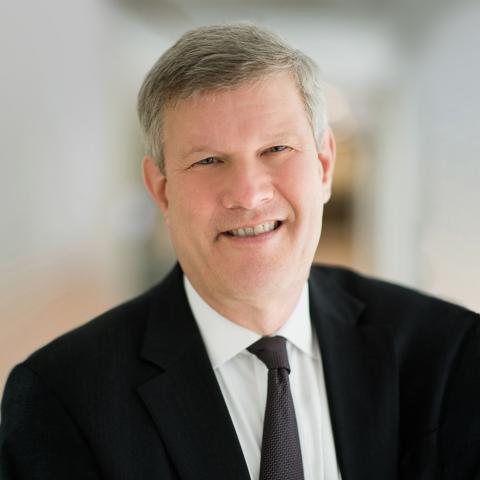Despite significant handwringing from the White House and the FCC’s current chair, federal legislators seem poised to allow the Affordable Connectivity Program (ACP) to expire in May.
The federal law designed to help make broadband more affordable for low-income households has proven itself to be anything but for taxpayers. A proposal that would extend the program through the end of the year would require an additional $7 billion from federal coffers. Untold more billions would be required thereafter.
Why should ACP, and not another program, receive additional funds—much less $7 billion through the end of the year? Such questions would ordinarily be answered by the work of the House and Senate Appropriations Committees. ACP may yet go through Appropriations, but thus far, it has not.
Absent an appropriation, how might ACP be funded? Some legislators have suggested allowing the FCC to borrow the funds from the Treasury with a hope and a prayer to pay the funds back at a future date.
This is a bad idea that would set a dangerous precedent. Federal agencies do not ordinarily borrow large sums from Treasury. If this were allowed to occur, other agencies would quickly seek similar “borrowing authority” to pay for projects that are unaffordable today, hoping that requisite funds might be scrounged up somewhere else tomorrow.
Lack of an appropriation is hardly the only issue with ACP, though. The program’s sweep is also entirely too broad. Households eligible for ACP are those deemed to be “low-income”—that is, those with an income of less than 200% of the federal poverty guidelines.
What exactly does this translate to? Any single person making under roughly $30,000 qualifies for the program.
Living on $30,000 per year is undoubtedly a challenge for most people, particularly in 2024. But this isn’t always the case. For example, most if not all college students make less than $30,000, including those working as RAs, TAs, and those who otherwise participate in work study programs. Should these students, whose future income opportunities are typically significantly higher than non-college grads, be eligible for a $30 per month broadband subsidy for their off-campus apartment at non-college grads’ expense?
In addition to its baseline cost to the taxpayer, ACP is unaffordable because it lessens competition for low-cost broadband service, consequently increasing its cost. Before ACP, broadband companies would compete for customers with lower prices, sometimes as low as $10 or $20 per month, and better service. But with ACP’s $30 monthly subsidy, there is no competitive benefit to offering a service for less than $30 per month, as low-income households would not benefit.
Case in point: the FCC hosts a website displaying which broadband providers in a given zip code are eligible for ACP. In addition to giving the names and contact information for these providers, the website also displays whether or not the providers offer service that is “$0 with ACP.” Thus, the clear result of ACP, intentional or not, was the setting of a price floor for broadband service at $30. This harms consumers by protecting incumbents from price competition and discouraging new entrants into the market who might otherwise offer sub-$30 service.
Simply put, in an era that is already marked by broad-based inflation, ACP causes broadbandinflation. This isn’t just theoretical. Dr. Paul Winfree of the Economic Policy Innovation Center recently testified before the Senate that the highest American broadband prices occur in areas where ACP enrollment is the highest.
There’s another, even more fundamental issue with ACP. Does ACP, in FCC-speak, help close the “digital divide?” That is—does ACP actually help connect a significant number of Americans to the Internet who otherwise would not be able to afford a connection? This, after all, has been repeatedly touted as the overarching goal of federal broadband funding.
The answer, as it turns out, is “no.” Despite the FCC proudly stating that more than 23 million households take part in ACP, the FCC’s current chair has testified under oath that between 78 and 84 percent of ACP subsidy recipients were already subscribed to broadband service before ACP’s enactment.
That’s not all. A Pew Research study conducted in February 2021, well before the inception of ACP, found that 79 percent of Americans with incomes less than $30,000—the income limit for a single person for ACP—owned a smartphone. Translation: a significant amount of individuals eligible for ACP already willingly paid, and likely still pay, for Internet service via their smartphone.
Why, then, does the FCC have a program covering 23 million households when the vast majority of them are already able to pay for Internet access? It is a perplexing question, particularly given that both the FCC’s Inspector General and the Government Accountability Office recentlyfound ACP to be highly vulnerable to fraud. Identified weaknesses include “potential duplicate subscribers, subscribers allegedly receiving fixed broadband at P.O. Boxes and commercial mailboxes, and subscribers with broadband providers’ retail locations as their primary or mailing addresses.” None of this comes close to good governance.
If Congress decides to extend ACP, it should narrow the program to only cover households that but for the program’s subsidy would not already be subscribed to Internet service. Sadly, such rational, budget-minded proposals are seldom found in Washington.





















